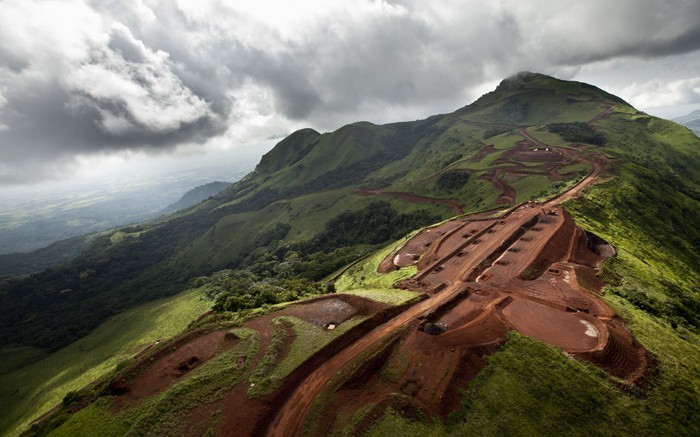VANCOUVER — A decade after mega-miner Rio Tinto (NYSE: RIO; LSE: RIO; ASX: RIO) was awarded the world-class Simandou iron-ore concessions in Guinea, West Africa, it looks like the stage has been set for what would be the largest infrastructure project in African history. Rio has announced a US$20-billion investment framework in Guinea that could double the country’s gross domestic product and create 45,000 jobs.
The framework is for the development of concession blocks 3 and 4 at Simandou, and it appears to resolve Rio’s tumultuous relationship with the Guinean government, which took back part of the company’s mineral rights in 2008. Under the agreement Rio Tinto will take a 46.6% stake in the project; the Aluminum Corp. of China (Chinalco), 41.3%; the Guinean government, 7.5%; and the World Bank’s International Finance Corp. (IFC), 4.6%.
In 2008 the Guinean government stripped Rio’s mining rights for Simandou’s blocks 1 and 2, and awarded them to Israeli mining magnate Beny Steinmetz’s BSG Resources. After a corruption hearing that concluded in April, the government returned the mining rights to Rio and filed a suit against Steinmetz on charges of corruption and bribery.
“With massive infrastructure investment, this project is of critical importance for the people of Guinea,” Steinmetz noted the agreement. “It’s a nationwide priority that goes beyond the mines and far beyond our generations. With transparent and fair deals, our mining sector has the potential to be a game changer for Guinea. [Simandou] also represents a symbol of our continent’s tremendous efforts to meet its infrastructure challenges and build inclusive growth.”
Simandou would be the largest combined iron-ore and infrastructure project ever built in Africa, and would include: a mine that would produce 91 million tonnes of “high-grade” iron ore annually; a 650 km, trans-Guinean multi-user railway to the country’s coast; and a newly built deepwater port in the Forécariah prefecture.
The agreement stipulates third-party involvement in funding the infrastructure, which fits in with Rio’s recent mandate to control capital spending. Around 67% of Simandou’s US$20-billion price tag is expected to come from infrastructure development.
A preferential and stabilized tax and customs regime has also been outlined to provide investment support and facilitate the construction and maintenance of the mine and infrastructure.
All infrastructures will be owned for 30 years by a newly formed company, after which ownership will be transferred to the Guinean government. One feature of the framework is the multi-user nature of the transport infrastructure, which means it can be accessed by Guinean commercial and private users to help cross-country mobility for the Guinean people, and boost the economy with goods moved to global markets opened up by the port.
IFC executive vice-president and CEO Jin-Yong Cai said that the project is “a priority for IFC, given its potential to bring jobs, infrastructure and revenues to Guinea . . . projects of this scale require strong partnerships. This agreement is a testament to the strong collaboration of the [partners], including the Government of Guinea, in developing a framework that will bring long-term positive benefits to the country.”
The Guinea government should submit the framework to the National Assembly for ratification. If the agreement is passed, the partners have one year to finish a feasibility study that confirms Simandou’s cost parameters.
The Guinean government maintains an option to increase its share in the project to 35% over 20 years: another 7.5% for free and 20% on a contributing basis (10% bought at historical mining cost, and 10% bought at market value).
In terms of revenue, Guinea would initially receive a 30% income tax from Simandou, as well as a 3.5% free-on-board royalty for all exported ore. The partners would contribute 0.25% of revenues to help economically develop local communities.
Rio has traded within a 52-week window of US$39.14 to US$60.61, and closed at US$54.58 at press time on 1.14 million shares traded. The company expects to produce 250 million tonnes of iron ore in 2014, and has 1.4 billion shares outstanding for a $101-billion market capitalization.


Be the first to comment on "Rio Tinto’s US$20B iron ore mine plan in Guinea"